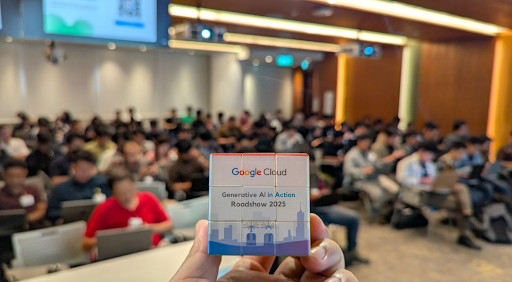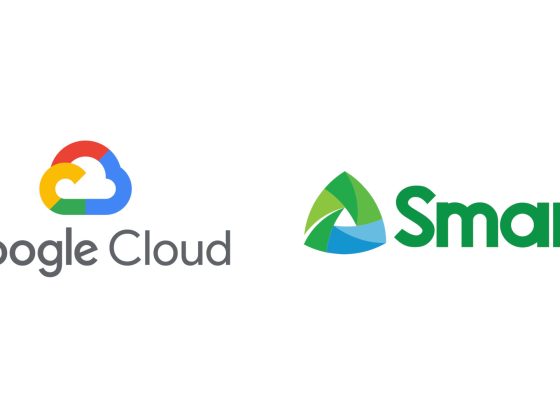LF Edge, an umbrella organization within the Linux Foundation that aims to establish an open, interoperable framework for edge computing independent of hardware, silicon, cloud, or operating system, announced the availability of Akraino Release 3 (“Akraino R3”). Akraino’s third and most mature release to date delivers fully functional edge solutions– implemented across global organizations– to enable a diversity of edge deployments across the globe. New blueprints include a focus on MEC, AI/ML, and Cloud edge. In addition, the community authored the first iteration of a new white paper to bring common open edge API standards to align the industry.
Launched in 2018, and a Stage 3 (or “Impact” stage) project under the LF Edge umbrella, Akraino Edge Stack delivers an open source software stack that supports a high-availability cloud stack optimized for edge computing systems and applications. Designed to improve the state of carrier edge networks, edge cloud infrastructure for enterprise edge, and over-the-top (OTT) edge, it enables flexibility to scale edge cloud services quickly, maximize applications and functions supported at the edge, and to improve the reliability of systems that must be up at all times.
From our partners:
“Akraino has evolved to unify edge blueprints across use cases,” said Arpit Joshipura, general manager, Networking, Automation, Edge and IoT, the Linux Foundation. “With a growing set of blueprints that enable more and more use cases, we are seeing the power of open source impact every aspect of the edge and how the world accesses and consumes information.”
About Akraino R3
Akraino Release 3 (R3) delivers a fully functional open source edge stack that enables a diversity of edge platforms across the globe. With R3, Akraino Edge Stack brings deployments and PoCs from a swath of global organizations including Aarna Networks, China Mobile, Equinix, Futurewei, Huawei, Intel, Juniper, Nokia, NVIDIA, Tencent, WeBank, WiPro, and more.
Akraino enables innovative support for new levels of flexibility that scale 5G, industrial IoT, telco, and enterprise edge cloud services quickly, by delivering community-vetted and tested edge cloud blueprints to deploy edge services. New use cases and new and existing blueprints provide an edge stack for Connected Vehicle, AR/VR, AI at the Edge, Android Cloud Native, SmartNICs, Telco Core and Open-RAN, NFV, IOT, SD-WAN, SDN, MEC, and more.
Akraino R3 includes 6 new blueprints for a total of 20, all tested and validated on real hardware labs supported by users and community members — the Akraino community has established a full-stack, automated testing with strict community standards to ensure high-quality blueprints.
The 20 “ready and proven” blueprints, include both updates and long-term support to existing R1 & R2 blueprints, and the introduction of six new blueprints:
- The AI Edge – School/Education Video Security Monitoring
- 5G MEC/Slice System– Supports Cloud Gaming, HD Video, and Live Broadcasting
- Enterprise Applications on Lightweight 5G Telco Edge (EATLEdge)
- Micro-MEC (Multi-access Edge Computing) for SmartCity Use Cases
- IEC Type 3: Android Cloud Native Applications on Arm®-based Servers on the Edge
- IEC Type 5: Smart NIC: Edge hardware acceleration
More information on Akraino R3, including links to documentation, code, installation docs for all Akraino Blueprints from R1-R3, can be found here. For details on how to get involved with LF Edge and its projects, visit https://www.lfedge.org/.
API White Paper
The Akraino community published the first iteration of a new white paper to bring common open edge API standards to the industry. The new white paper makes available, for the first time, generic edge APIs for developers to standardize across devices, applications (cloud native), orchestrations, and multi-cloud. The paper serves as a stepping stone for broad industry alignment on edge definitions, use cases, APIs. Download the paper here: https://www.lfedge.org/wp-content/uploads/2020/06/Akraino_Whitepaper.pdf
Looking Ahead
The community is already planning R4, which will include more implementation of open edge API guidelines, more automation of testing, increased alliance with upstream and downstream communities, and development of public cloud standard edge interfaces. Additionally, the community is expecting new blueprints as well as additional enhancements to existing blueprints.
Don’t miss the Open Networking and Edge Summit (ONES) virtual event happening September 28-29, where Akraino and other LF Edge communities will collaborate on the latest open source edge developments. Registration is now open!
Ecosystem Support for Akraino R3
Arm
“The demands on compute, networking, and storage infrastructure are changing significantly as we connect billions of intelligent devices, many of which live at the edge of the 5G network,” said Kevin Ryan, senior director of software ecosystem development, Infrastructure Line of Business, Arm. “By working closely with the Akraino community on the release of Akraino R3, and through our efforts with Project Cassini for seamless cloud-native deployments, Arm remains committed to providing our partners with full- edge solutions primed to take on the 5G era.”
AT&T
Mazin Gilbert, VP of Technology and Innovation, AT&T, said: “As a founding member of the Akraino platform, AT&T has seen first-hand the remarkable progress as a result of openness and industry collaboration. AI and edge computing are essential when it comes to creating an intelligent, autonomous 5G network, and we’re proud to work together with the community to deliver the best possible solutions for our customers.”
Baidu
“In the 5G era, AI+ Edge Computing is not only an important guarantee for updating the consumer and industrial Internet experience (such as video consumption re-upgrading, scene-based AI capabilities, etc.), but also a necessary infrastructure for the development of the Internet industry,” said Ning Liu, Director of AI Cloud Group, Baidu. “Providing users with AI-capable edge computing platforms, products and services is one of Baidu’s core strategies. Looking towards the future, Baidu will continue to adhere to the core strategy of open source and cooperate with partners to build a more open and improved ecosystem.”
China Unicom
“Commercial 5G is going live around the world. Edge computing will play an important role for large bandwidth and low delay services in the 5G era. The key to the success of edge computing is to provide integrated ICT PaaS capabilities, which is beneficial for the collaboration between networks and services, maximizing the value of 5G,” said Xiongyan Tang, Chief Scientist and CTO of the Network Technology Research Institute of China Unicom. “The PCEI Blueprint will define a set of open and common APIs, to promote the deep cooperation between operators and OTTs, and help to build a unified network edge ecosystem.”
Huawei
“High bandwidth, low latency, and massive connections are 5G typical features. Based on MEC’s edge computing and open capabilities, 5G network could build the connection, computing, and capabilities required by vertical industries and enables many applications. In the future, 5G MEC will be an open system that provides an application platform with rich atomic capabilities,” said by Bill Ren, Huawei Chief Open Source Liaison Officer. “Managing a large number of applications and devices on the MEC brings great challenges and increases learning costs for developers. We hope to make 5G available through open source, so that more industry partners and developers can easily develop and invoke 5G capabilities. Build a common foundation for carriers’ MEC through open source to ensure the consistency of open interfaces and models. Only in this way can 5G MEC bring tangible benefits to developers and users.”
Juniper Networks
“Juniper Networks is proud to have been an early member of the Akraino community and supportive of this important work. We congratulate this community for introducing new blueprints to expand the use cases for managed edge cloud with this successful third release,” said Raj Yavatkar, Chief Technology Officer at Juniper Networks. “Juniper is actively involved in the integration of multiple blueprints and we look forward to applying these solutions to evolve edge cloud and 5G private networks to spur new service innovations – from content streaming to autonomous vehicles.”
Tencent
“The new generation network is coming, IoT and Edge Computing are developing rapidly. At the same time, it also brings great challenges to technological innovation. High performance, low latency, high scalability, large-scale architecture is a must for all applications. TARS has released the latest version to meet the adjustment of 5G and Edge Computing. Massive devices can easily use TARS Microservice Architecture to realize the innovation of edge applications. The Connect Vehicle Blueprint and AR/VR Blueprint in Akraino are all using the TARS Architecture,” said Mark Shan, Chairman of Tencent Open Source Alliance, Chairman of TARS Foundation, and Akraino TSC Member. “The blueprints on the TARS Architecture solve the problem of high throughput and low latency. TARS is a neutral project in the Linux Foundation, which can be easily used and helped by anyone from the open-source community.”
Zenlayer
“We are proud to be part of the Edge Cloud community. Zenlayer is actively exploring edge solutions and integrating the solutions to our bare metal product. We hope the edge products will empower rapid customer innovation in video streaming, gaming, enterprise applications and more,” said Jim XU, chief engineering architect of Zenlayer.
About the Linux Foundation
Founded in 2000, the Linux Foundation is supported by more than 1,000 members and is the world’s leading home for collaboration on open source software, open standards, open data, and open hardware. Linux Foundation’s projects are critical to the world’s infrastructure including Linux, Kubernetes, Node.js, and more. The Linux Foundation’s methodology focuses on leveraging best practices and addressing the needs of contributors, users and solution providers to create sustainable models for open collaboration. For more information, please visit us at linuxfoundation.org.
###
The Linux Foundation has registered trademarks and uses trademarks. For a list of trademarks of The Linux Foundation, please see our trademark usage page: https://www.linuxfoundation.org/trademark-usage. Linux is a registered trademark of Linus Torvalds.
For enquiries, product placements, sponsorships, and collaborations, connect with us at [email protected]. We'd love to hear from you!
Our humans need coffee too! Your support is highly appreciated, thank you!








